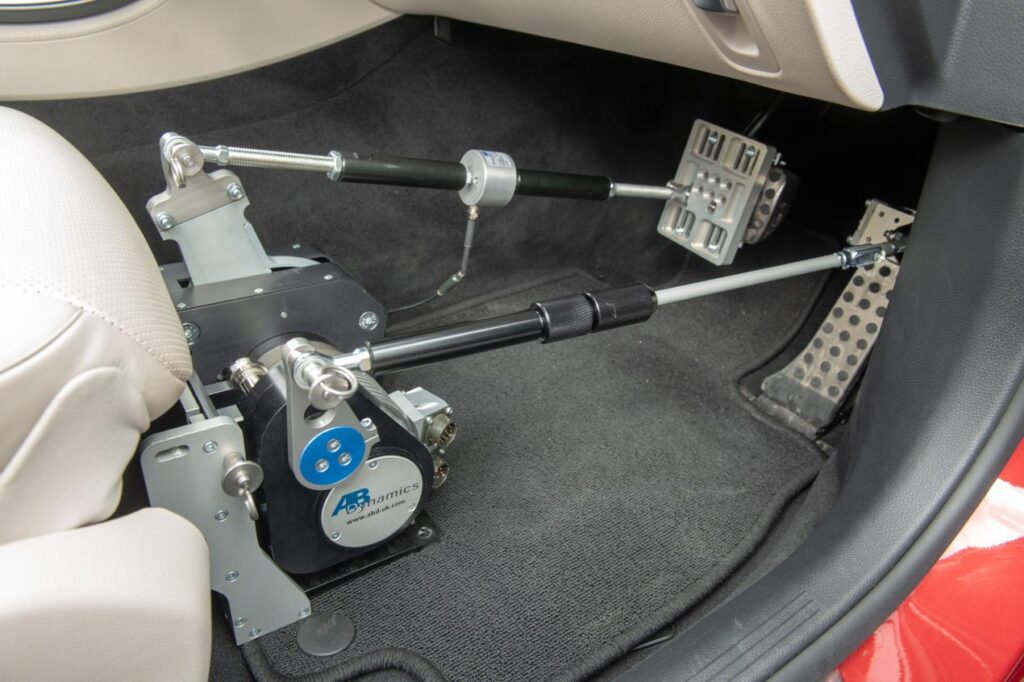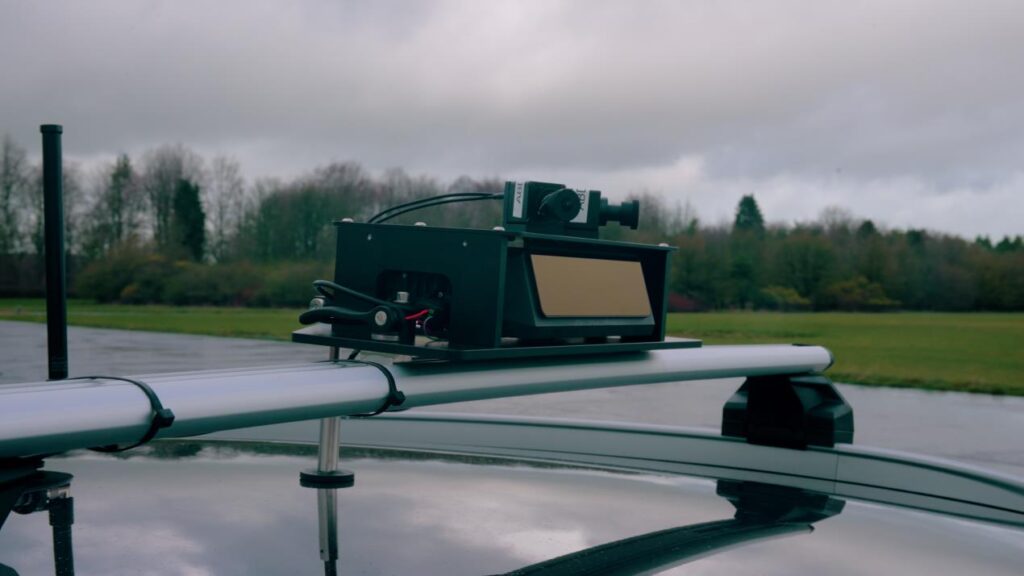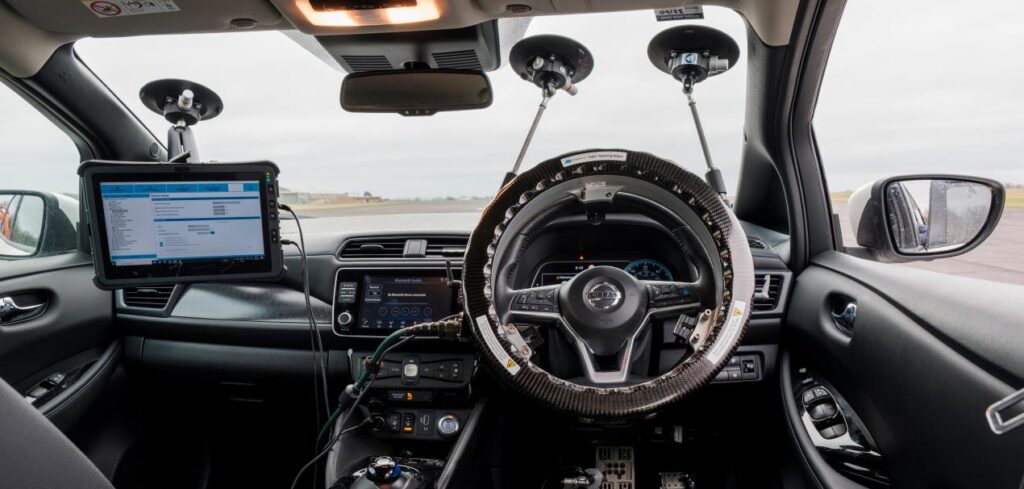Automotive test solution supplier AB Dynamics has developed an active onboard obstacle detection system to enable larger-scale driverless durability and misuse testing. Using the system, OEMs will be able to expand their driverless testing, increasing efficiency, data quality and safety.
The driving robots can be retrofitted to most types of vehicle and can conduct operations autonomously or be controlled by wire. Each system uses precise speed control and path-following algorithms to enable the vehicle to be operated in a ‘driverless’ mode with typical position error of less than 5cm. OEMs tend to use driverless solutions for high-mileage or misuse testing on unpleasant surfaces because removing the human driver from the test scenario improves safety.
“Traditionally, this testing is unpleasant, arduous and sometimes dangerous, which is why driving shifts can be limited to two hours or less to protect the driver,” said Ian Faulkner, AB Dynamics lead project engineer. “Our driverless solution completely removes the driver from the vehicle, significantly improving the safety of personnel. It also accelerates testing, and the addition of our new active object detection system is the key to increasing this even further by enabling OEMs to adopt this approach on a much larger scale.”

The active detection system uses sensor fusion from a lidar and dual-camera arrangement and coding developed by AB Dynamics to identify objects and their positions ahead of the test vehicle. The data is then fed to an AB Dynamics controller to stop the vehicle and alert the operator. This enables a larger number of driverless vehicles to be driven safely across a wider area with the same number of operators.
The camera and lidar sensors are mechanically mounted using the vehicle’s roof rails; if rails aren’t available, an alternative method is used. The system installation and calibration can be completed in under 20 minutes, helped by mounts that feature a built-in adjustable leveling system to align the sensors.

“Safe durability testing has always been a challenge for proving grounds. Even with severe restrictions on testing and driving time, the serious risk to human drivers is never removed,” said Faulkner. “Health and safety is the primary driver for the use of our driverless solutions, but with the maturity of our technology we now see the added benefits of data quality and efficiency helping to justify customer investment.”
The solution offers high levels of repeatability that are not possible with a human driver, delivering an accuracy of >2cm in a straight, >10cm during cornering and an overall repeatability of approximately 2cm.
Position, direction and speed are controlled using mechanical actuation of the vehicle’s steering and pedals by way of the driving robot or through AB Dynamic’s Flex-0 drive-by-wire technology.
Driverless vehicle fleets are operated from a base station and supervised by an operator at all times. Furthermore, a high-performance encrypted radio network is used to ensure reliable data transfer from vehicle to vehicle and vehicle to base.
“Our driverless solution enables testing to be conducted 24/7 without any dips in performance, only stopping to refuel or recharge the vehicle,” said Faulkner. “Removing the driver from the equation increases safety and testing efficiency and the accuracy of our solution enables tests to be conducted that aren’t possible with a human driver. The increased repeatability and consistency also result in better-quality data from testing.”
For more on testing, please click here.


